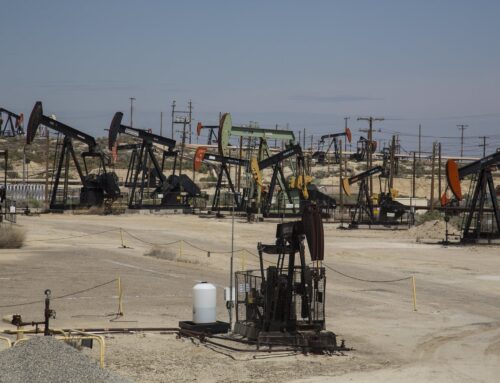View/Download this article in PDF format.
Title XVII of the Energy Policy Act of 2005 authorized the Department of Energy (DOE) Loan Guarantee Program to provide loan guarantees for innovative technologies. To qualify for the program, projects must “avoid, reduce or sequester air pollutants or greenhouse gases; employ new or significantly improved technologies and provide a reasonable prospect of repayment.” While the program was intended for emerging energy technologies, mature industries like coal and nuclear are eligible as well. In October 2007, DOE issued a final rule, or regulations detailing the processes and parameters of the program. In December 2009, DOE amended this rule, changing the terms for taxpayers’ recoupment of assets in the event of project default.
Although the program has been authorized since 2005, it was late 2009 that the program distributed its first finalized loan guarantee. In September 2009, DOE awarded a $535 million loan guarantee to Solyndra, a solar energy company in California.This project ran into financial trouble after shutting down a plant at the end of 2010 due to unexpected cost overruns. Then in September 2011, the company went bankrupt after spending $528 million of its loan guarantee. The company was under investigation by the FBI and House Energy and Commerce Committee for 18 months. It is currently unclear how much of the loan guarantee taxpayers will ultimately lose. Since the first loan, DOE has offered conditional commitments or final loan guarantees 34 projects valued at $25.4 billion, with nine additional applications under review valued at $4.8 billion.
With $34.8 billion in loan guarantee authority still available, taxpayers have a considerable stake in the successes or defaults of DOE’s Title XVII program. Under the current structure of the program there are several significant taxpayer concerns, including the massive scope of the program, uncertain costs associated with Title XVII, the weakening of taxpayer rights in the event of default, and the unclear administration of loans, among others.
Loan Guarantee Funding History
Currently, the loan guarantee program has a $34 billion volume cap available for loan guarantees. The first $4 billion was authorized in the FY 2007 Continuing Resolution. Then in 2008, the Omnibus Appropriations bill provided an additional $38.5 billion for the program, earmarking it for specific technologies including nuclear facilities, coal gasification, coal power generation with carbon capture and storage, and renewable energy and transmission projects. The FY 2009 Omnibus mirrored the FY 2008 legislation, and added $8.5 billion for the renewable energy portion of the loan guarantee program. With this addition and the existing FY 2007 allotment for loan guarantees, the program then had a $51 billion budget cap. In the 2011 Continuing Resolution, previously allocated renewable authority was rescinded and replaced with $170 million in direct appropriations to pay for credit subsidy costs for renewable projects (see Table 1). This appropriation is limited to supporting approximately $848 million in loan guarantees. All but $4 billion of the program’s $34 billion in existing loan guarantee authority is designated for specific energy technologies (see Table 2).
| Table 1: Increasing Cap on Volume of Loan Guarantees in 07-11 Appropriations Bills | |
|---|---|
| Legislation | Amount |
| 2007 Continuing Resolution | $4,000,000,000 |
| 2008 Omnibus | $38,500,000,000 |
| 2009 Omnibus | $47,00,000,000 |
| 2011 Continuing Resolution | -$17,000,000,000 |
| Total Loan Guarantee Program Authority | $34,000,000,000 |
| Table 2: Loan Guarantee Project Breakouts for $34 billion Cap | |
|---|---|
| Recipient Technology | Current Allotment |
| Nuclear Power Facilities | $18,500,000,000 |
| Renewable and/or Energy Efficient Systems Manufacturing and Distributed Energy Generation, Transmission and Distribution | $1,500,000,000 |
| Front-end Nuclear Fuel Cycle | $4,000,000,000 |
| Coal-based Power Generation and Industrial Gasification | $6,000,000,000 |
| Advanced Coal Gasification | $2,000,000,000 |
| Unallocated by Congress | $2,000,000,000 |
| Table 3: Direct Appropriations for Credit Subsidy Cost | |
|---|---|
| Legislation | Amount |
| American Recovery and Reinvesment Act Credit Subsidy Payments Available as of March 2011 | $2,400,000,000 |
| 2011 Continuing Resolution for 1703 Renewable Projects | $170,000,000 |
Loan Guarantee Commitments
To date, the loan guarantee program has provided 30 final guarantees totaling more than $15 billion and ten conditional commitments requesting more than $15 billion for renewable and energy efficiency, nuclear reactor, and uranium enrichment projects. Of the ten conditional commitments, four projects requesting a total $10.33 billion are still considered ‘active’ by DOE today and nine applications totaling $4.8 billion are being reviewed for potential conditional commitments.
Although none of the $18.5 billion in loan guarantee authority available to the nuclear industry has been finalized, the President’s FY 2012 budget proposal included an additional $36 billion in new loan guarantee authority for nuclear reactor projects. However, the President’s FY2013 budget proposal rescinded this request and included $30 million for administrative costs and no additional loan guarantee authority. The President’s FY2014 budget proposal requested $48 million for administrative costs.
Title XVII: Section 1703
When first authorized, the loan guarantee program only provided loan guarantees under Section 1703 of Title XVII of the Energy Policy Act of 2005. Until the 2011 Continuing Resolution, loan guarantees issued under Section 1703 of the program have been self-pay, meaning the industry is required to pay the subsidy cost, or cost of the default risk, to the federal government for granting the loan guarantee. The percentage of the loan required to be paid by companies to cover the default risk is determined by the Office of Management and Budget, DOE, and Treasury and is not been publicly disclosed for any individual projects. Approximately $34 billion has been authorized for self-pay loan guarantees and the authority has no expiration date.
So far, four projects have received conditional commitments under Section 1703, including $8.33 billion for a nuclear plant in Georgia (totaling three applications) and $2 billion for a uranium enrichment project in Idaho, but no loan guarantees have yet been finalized. The 2011 Continuing Resolution made $170 million in direct appropriations available to pay for the credit subsidy cost for renewable energy projects under this section.
Title XVII: Section 1705
The American Recovery and Reinvestment Act of 2009 (ARRA) created a new program of loan guarantees under the original statute in the 2005 Energy Bill, known as Section 1705. Title XVII Loan guarantees provided through section 1705 had to be committed by September 30, 2011, the end of the fiscal year. In its two years, the program awarded more than $15 billion in loan guarantees through Section 1705. This section had no budget authority cap, but was instead limited by the number of projects whose appropriated credit subsidy funds could be paid for with available appropriations. Under the ARRA, $6 billion in credit subsidies for renewable energy and electric power transmission projects was appropriated to cover approximately $60 billion in projects. Some of these funds were used by Congress to offset the cost of other legislation and there was a total of about $2.4 billion for credit subsidies under 1705. Since the DOE does not disclose how much the credit subsidy costs for each project, it is unclear how much of that money was used to fund the $15 billion in projects loaned through the program.
Fiscal Year 2014 Appropriations
The President’s FY2014 budget request calls for no additional loan guarantee authority or credit subsidy appropriations and includes $48 million for administrative costs. For the second year, the President has not proposed increasing loan guarantee authority for nuclear reactor projects by $36 billion. In line with the President’s request, the House and Senate Energy and Water Appropriations Bills do not increase the loan authority or provide additional credit subsidy costs appropriations for any technology areas. However, the House bill would cut funding for administrative costs to $22 million—$26 million below the President’s request and $16 million below the fiscal year 2013 enacted level. The Senate bill would also cut funding for administrative costs to $42 million—$6 million below the President’s request and $10 million below the fiscal year 2013 enacted level.
Future Taxpayer Risks
Despite taxpayer risks, two of President Obama’s past four budget proposals have requested an increase in nuclear loan authority by $36 billion and appropriated more money for credit subsidy costs for renewable projects.
Congress must face the reality that loan guarantees are anything but “free money.” Putting the full faith and credit of the U.S. government behind costly, risky projects that the private sector won’t finance is fiscally reckless. In many cases, these guarantees would be backing projects that are not even ready to move forward because they have unreliable cost projections, significant designs flaws, and will likely encounter severe construction delays. The loan guarantee program as currently structured will do little more than pad the pockets of established industries at the taxpayers’ expense.
For more information, please contact Autumn Hanna at (202) 546-8500 x112
or autumn@taxpayer.net.










